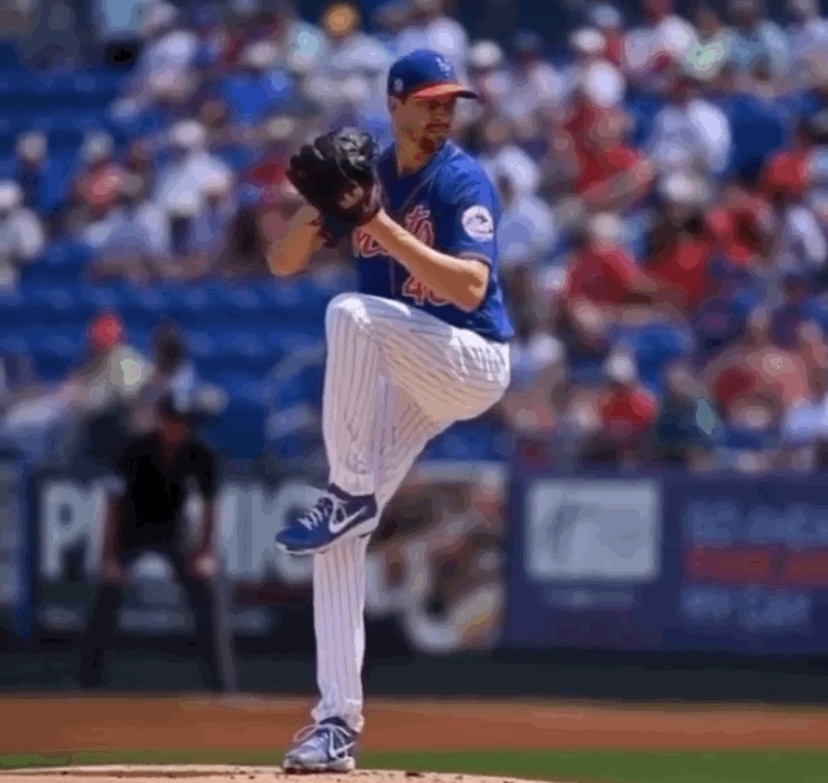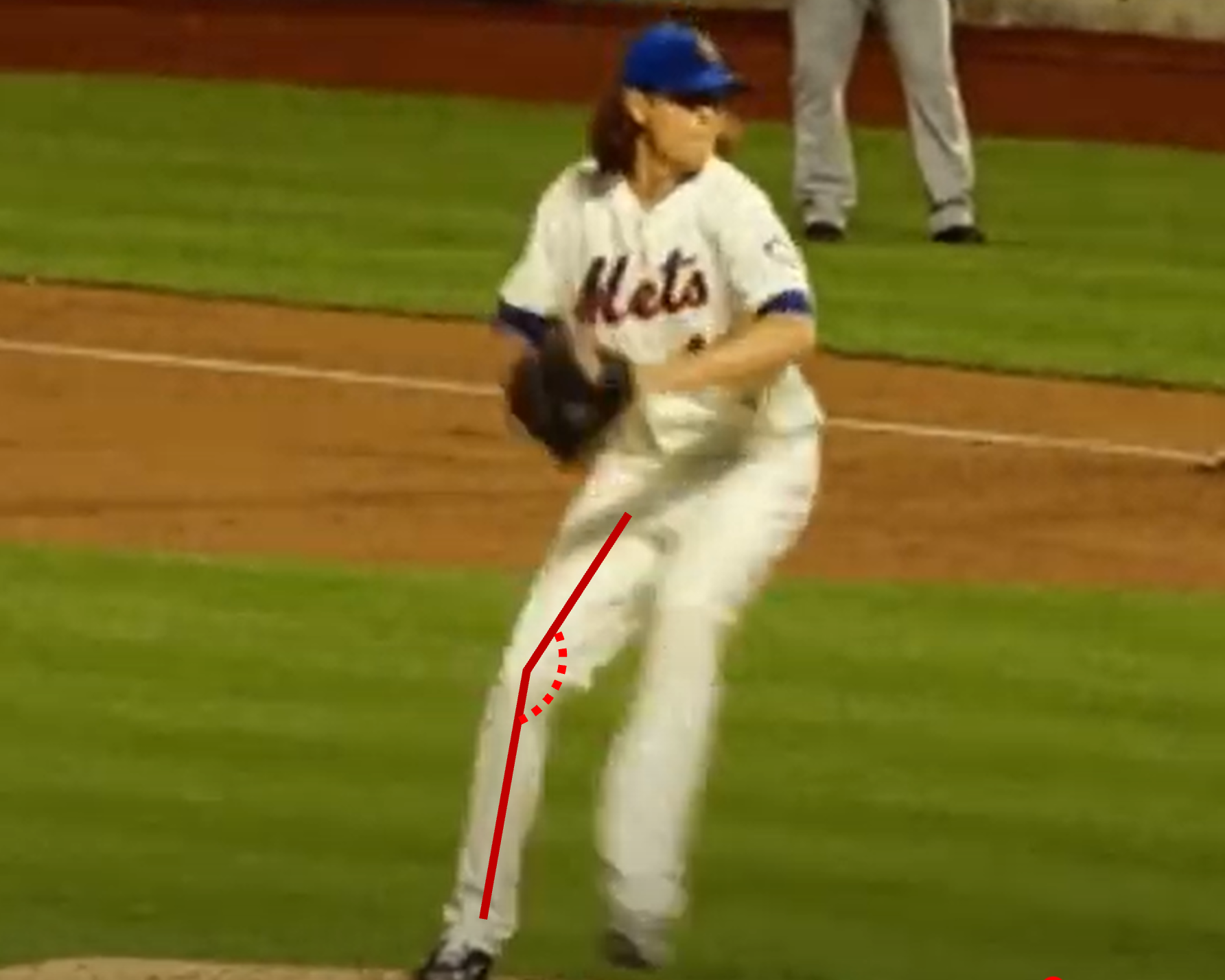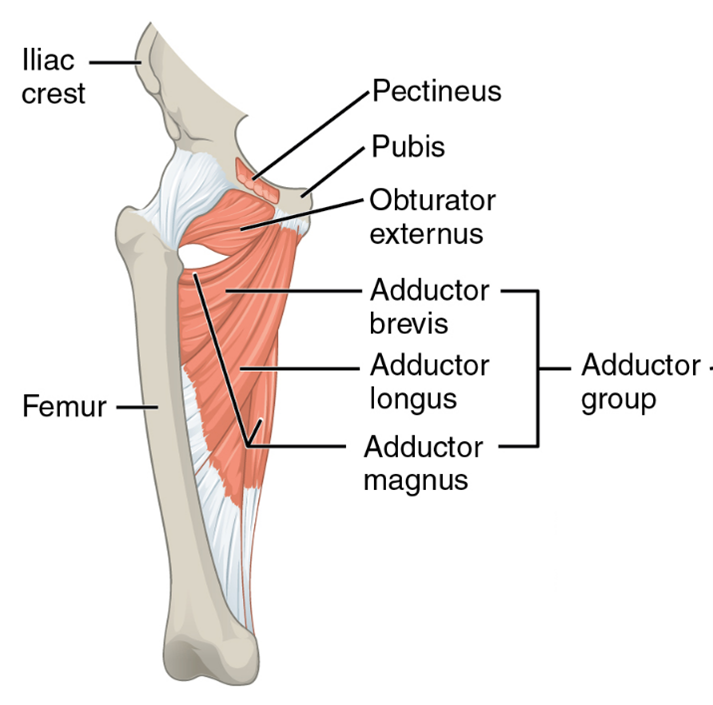
Use your legs. Use your lower half. Sounds great but, “what the heck does it mean”? Coaches often cue this as if it’s one single thing. In reality, a proper use of the lower half has 4 different but connected and sequential components. In this 4 part series on lower half pitching mechanics, we’ll take a closer look and break down what I consider to be the 4 big plyers we need on the road to an efficient lower half:
-
- Part 1 – Drift
- Part 2 – Load
- Part 3 – Drive / Rotate
- Part 4 – Block
Let’s kick off Part 1 of this series with component #1 – Drift.
Drifting – What is it?
Drifting is the initial of movement of the center of mass (COM) down the mound during leg lift and prior to driving the back leg. We’re not looking for a great amount here, 3-6” away from the rubber / back foot will do it. We really just want to get the COM moving with gravity’s help so we can set up a better back leg angle once the drive phase begins.

There is no ideal distance, speed, or coil in which drifting should occur. Every athlete is different and so is their drift.
Below are two examples:
Chapman – Drift While Loading
DeGrom – Drift / No load
While there are some MLB pitchers who do not drift at all, they are considered outliers. The majority of the hardest throwers shift their center of mass forward during leg lift.
Why is it important?
Drifting / initiating the COM helps us get into more ideal positions later in the delivery by helping to delay rotation until a bit later in the delivery (why this is important will be discussed in more detail in Part 2).
In addition to initiating COM down the mound prior to driving the back leg, drifting accomplishes 2 other things:
-
- Allows the athlete to get into the back leg and ground more efficiently, helping move the athlete forward, and helping to better apply force in a linear direction once the drive phase begins
- Puts the lower half in the more angled position we referred to earlier to better accelerate once force gets put into the ground with the back leg during the drive phase
Note: Simply loading from a “static” balance position directs force down instead of linearly towards the batter. This can cause a pitcher to play “catch up” throughout the rest of the delivery, affecting upper half positioning while also contributing to command issues as well as killing momentum into FP.
What physical attributes do you need to do this properly?
Since drifting happens early, balance and single leg strength / stability in the back leg are really the only two big factors at play here. This requires hip adductor strength, which helps maintain a good balance point while falling forward requires great bracing on the inner part of the back leg (i.e. the adductor).

Adductor side planks are a big bang-for-the-buck exercise we use when we want to grab some lateral core stability while strengthening the adductors.
Adductor Side Planks
In addition, the foot / ankle complex is the foundation that everything structurally stands on. So, building this foundation goes a long way in maintaining a strong, stable back leg while drifting.
Lateral KB Lunge
Summary
Drifting helps put the lower half in a more advantageous position prior to the drive / rotation phase. Due to individual physical characteristics, no two athletes will drift the same way. Play with different parameters, fast, slow, slight, extreme, counter rotated or not.
Stay tuned for part 2 when we will look at the “Load” phase.
See ya’ in the gym…
By Nunzio Signore (Owner at RPP Baseball)
You live too far to train with us in-house at RPP? You can now train with us on a REMOTE basis.


